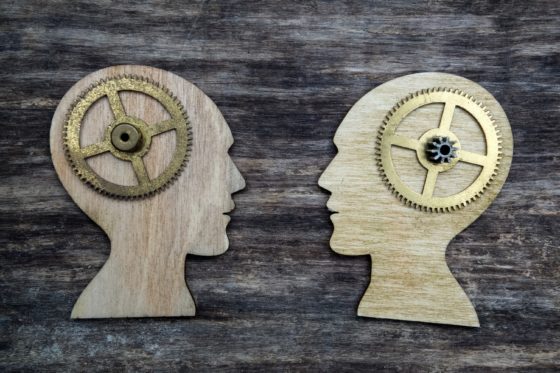
Once you decide that using machine translation makes sense for your localization needs, you’ll want to choose a machine translation (MT) engine. There are many different types of MT engines, and each type can help speed up the translation process.
But not every machine is the right choice for every translation. That’s where Acclaro’s expertise working with machine translation engines comes in. We can partner with you to select and deploy the right type of MT engine depending on your content, target languages and subject matter. Since we are tech independent, we can impartially recommend the best MT engine for your timeline, budget and quality requirements.
Before we get started, we know that machine translation terminology can be confusing. Our machine translation terminology guide can help you understand key terms that we’ll use below.
Machine translation engine types
With rapid advances in artificial intelligence (AI), machine translation engines have significantly evolved over the past few years. Advanced technology and higher quality output have created a wide variety of options for professional MT projects, while professional linguists still play a massive role in the quality level of the translations.
So, what types of MT engines are out there? Let’s take a look at the pros and cons of different types of MT engines:
- Uncustomized, “out of the box” neural MT engines: This type of MT engine works best if you’re looking for “generic” translations. If you have established guidelines and preferences for your brand voice/tone, terminology and style, we recommend customizing the MT engine to “teach” it those preferences.
- Customized neural MT engines: This type of engine can provide high-quality translations that sound more human. The technology also better captures the context of the content.
- Adaptive MT engines: Because adaptive MT engines learn “on the fly,” they require less startup time, they’ve historically been a good fit for large localization programs that use relatively new content and require a large team of linguists. Adaptive machine translation uses human interaction and choices to prompt the engine to adapt to the suggestions accordingly.
- Statistical MT engines: We’ve come a long way since the launch of these engines. They can be taught, but may need several rounds of initial training and consistent retraining to achieve satisfactory output.
Evaluating MT engine output
When thinking about using MT for a project, you have some important considerations. At Acclaro, we use our deep knowledge and experience of MT systems to help you determine the most important factors first — the desired quality, turnaround time and budget.
1. Define quality, turnaround time and budget expectations upfront
Can all engines handle all types of jobs? Unfortunately, the answer is no. Like experts in their fields, certain MT engines are better suited for certain types of translation projects. That’s why we work with clients to clearly define project requirements and quality expectations upfront. This way, we can help strike a good balance between cost and time savings on one hand, and quality on the other.
2. Evaluate content
We’ll first look at your content before making a recommendation about which MT engine is best.
When you’re working with internal documents or instructions where a basic understanding of the source content is sufficient, fully automated useful translation (FAUT) might be a good fit. With this type of MT, there is typically little human intervention. While MT engines are still trained and carefully set up in this scenario, output deemed satisfactory is used as-is with no post-editing by human linguists.
Other MT projects with higher visibility or where accuracy is key usually require post-editing by highly specialized human linguists with deep subject matter knowledge. Linguists will review the source and target content to resolve issues with accuracy, terminology, style, etc. Despite the vast improvements in MT, assigning the right job to the right team of linguists is still as important as with human-only translation to ensure the best possible translation quality.
3. A post-editing approach
Since we work with MT for a wide variety of clients, we have processes in place to help you weigh your options. Depending on what type of content you need translated, pairing well-established MT engines with human post-editing can be a very efficient way to set up your program. A combination of the right MT engine and post-editing by human linguists can be both time and cost-effective, without sacrificing quality.
4. MT engine training for quality improvements
We are able to customize MT engines by evaluating whether relevant, existing translations can be used to “train” engines for a new project. As mentioned earlier, MT engines can be trained in one of two ways:
- Use previously translated content that is stored in a Translation memory database, as well as glossaries and monolingual data to train the MT engine.
- Use adaptive machine translation.
Before training and customizing MT engines, we recommend and can help you establish guidelines and preferences for brand voice and tone, terminology and style for the target languages. A well-trained engine produces higher-quality results since it’s preloaded with your desired terminology and style, so less time is spent on post-editing, resulting in cost savings.
5. Automated vs human evaluation
Once we’ve reviewed content and your considerations around quality, turnaround time and budget, we evaluate output from MT engines that may be a good fit for the job. We’ll work closely with you during this process to evaluate the quality of the MT engine output, including comparing it to a human translation.
- BLEU scores – One common method used in the translation industry is the BLEU (bilingual evaluation understudy) score. BLEU uses an algorithm to compare a machine translation and a human translation and looks at how similar the human and machine translations are.
- Human evaluation – Another method we use is to have a linguist score the MT output. The linguist can compare the output of multiple MT engines and give qualitative feedback. This method allows us to understand if there are issues with the system like recurring mistakes for example.
Ultimately, human evaluation of your project and the capabilities of each machine will allow us to select the best engine type for you based on text, language and subject matter. Our evaluation is based off our prior experience using the machine in our work with others. Sometimes, we’ll suggest a combination of engines for a given project to provide you with the desired output at the best cost available for each target language.
MT client success stories
Acclaro has worked with a number of clients to help them get the best MT results. Each company faced a unique situation. Through our expertise with MT, each was able to get the results they were looking for.
Machine translation for support documents
A software client wanted to test out the need for additional languages for support documents. The goal is to provide a cost-effective way to translate content using MT and post-editing. The content is to be published on the website to test acceptance and interest. This user feedback will be used to build a business case for adding additional target languages and to define the desired translation quality level.
Machine translation for online customer support content
One of our long-standing clients – an analytics company that sells software and hardware in a number of different industries – asked us to partner with them on finding and deploying the best MT option without sacrificing quality for its customer support and help content. We supported them for many years with human translations but due to turnaround and budget requirements, they decided to explore MT options.
In collaboration with the client, we opted for a rule-based MT engine initially and as MT evolved, we deployed a statistical MT engine that supports Asian languages, produces better quality output, and requires less set-up time. In addition to quality improvements produced by the statistical MT engine, we ensure quality needs are met by deploying a full post-editing step by a linguist to eliminate grammatical errors and incorrect translations and by customizing the MT engine with existing, previously translated content.
To further improve translation quality, we’re currently exploring a customized, neural MT engine for this client.
Machine translation for ecommerce content
An eCommerce client, with a need to translate a large volume of words on an aggressive timeline, turned to us to help them evaluate and deploy MT. The client requirements included error-free translations of product descriptions with less strict rules around terminology, tone and style.
Since we had no translation memory available to us for the tricky language combination, Korean to Traditional Chinese, we opted for a neural MT engine to first translate the Korean content into English, and then from English to Traditional Chinese. After the first pilot round we re-evaluated the MT engine output and were then able to set up a customized engine for this client to further improve translation quality.
Work with an expert translation partner to help you find the right MT approach
What is the best translation engine for you? That’s a great question and one that we look forward to answering. Know that we work with a number of different MT engines and stay on top of the latest developments so we can introduce our clients to the best solution for their needs.
Don’t be overwhelmed with the many factors that you need to consider when making a decision. Acclaro is a trusted provider to many companies looking to benefit from MT. We can help you evaluate the engines that best meet your needs and provide quality translations so your project is successfully completed — on time and within budget.
Insights for global growth






Power your strategic growth
Go beyond tactical localization with tailored, strategic solutions that resonate locally and drive growth globally.
Get started